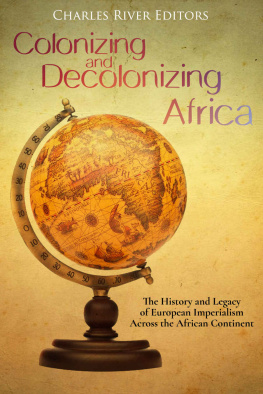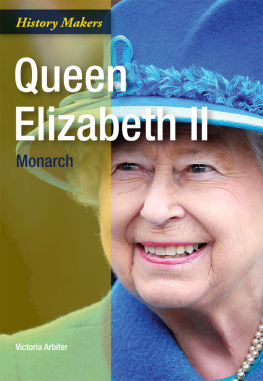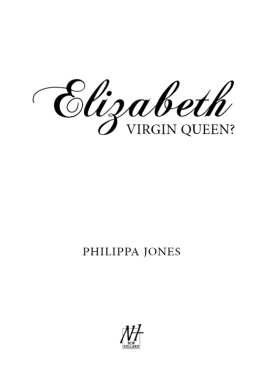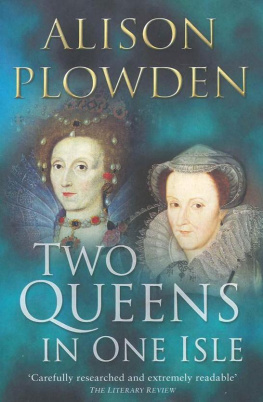Charles River Editors was founded by Harvard and MIT alumni to provide superior editing and original writing services, with the expertise to create digital content for publishers across a vast range of subject matter. In addition to providing original digital content for third party publishers, Charles River Editors republishes civilizations greatest literary works, bringing them to a new generation via ebooks .
Sign up here to receive updates about free books as we publish them , and v isit charlesrivereditors.com for more information.
Introduction

Queen Elizabeth I ( 1533 - )
" V ideo et taceo . " ( "I see, and say nothing") Queen Elizabeth I
When Queen Elizabeth II came to the throne in 1952, many commentators heralded the beginning of her reign as the second Elizabethan age. The first one , of course, concerned the reign of Henry VIIIs second surviving daughter and middle surviving child, Queen Elizabeth I , one of Englands most famous and influential rulers . I t was an age when the arts, commerce and trade flourished. It was the epoch of gallantry and great, enduring literature. It was also an age of wars and military conflicts in which men were the primary drivers and women often were pawns.
Elizabeth I changed the rules of the game and indeed she herself was changed by the game. She was a female monarch of England, a kingdom that had unceremoniously broken with the Catholic Church , and t he Vatican and the rest of Christendom was baying for her blood. She had had commercial and militaristic enemies galore. In the end, she helped change the entire structure of female leadership.
Elizabeth was the last Tudor sovereign, the daughter of the cruel and magnificent King Henry VIII and a granddaughter of the Tudor Houses founder , the shrewd Henry VII. Elizabeth, hailed as Good Queen Bess, Gloriana and The Virgin Queen to this day in the public firmament, would improve upon Henry VIIIs successes and mitigate his failures, and despite her own failings would turn out to have the heart and stomach of a king, and a king of England too . Indeed, that was t he phrase she would utter in describing herself while exhorting her troops to fight for England against the Spanish Armada).
Elizabeth often has been featured in biographies that were more like hagiographies, glossing over her fits of temper, impatience and other frailties. It is fair to say, however, that she had also inherited her grandfathers political acumen and her fathers magnificence, thus creating not just one of the most colourful courts in Europe but also one of the most effective governments in English history. It was an age of Christopher Marlowes and William Shakespeares flourishing creativity that still enhances English as well as comparative literature. Elizabeth was also patroness of Sir Francis Drake, the pirate, thereby promoting English settlement of foreign colonies. The Jamestown Settlement in Virginia would come in 1607, four years after Elizabeths passing, and the Plymouth colony in Massachusetts would come in 1620.
Elizabeth had also fought for her life time and time again in an era that was already unsafe for female leaders and she probably had remembered the searing feeling of realizing that her mother Queen Anne (Anne Boleyn) had been executed by her father arguably on a trumped-up charge. Danger was pervasive; strategy was needed not just to thrive but just to survive.
Englands Greatest Queens chronicles the life and reign of Englands most famous queen , but it also humanizes the woman who ruled one of the worlds most powerful kingdoms in an age dominated by men. Along with pictures of important people, places, and events in her life, you will learn about Elizabeth I like you never have before, in no time at all.
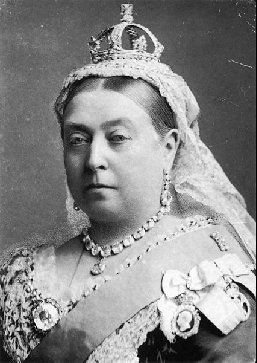
Queen Victoria (1819-1901)
Since it has pleased Providence to place me in this station, I shall do my utmost to fulfil my duty towards my country; I am very young and perhaps in many, though not in all things, inexperienced, but I am sure that very few have more real good will and more real desire to do wh at is fit and right than I have . Queen Victoria, 1837
England has had no shortage of influential monarchs, but only Queen Elizabeth I and Queen Victoria had their nations age literally named after them. Both the Elizabethan era and Victorian era have come to symbolize a golden age of peace and progress in every aspect of British life, with the long reigns of both queens also providing stability.
Of course, there was a critical difference between those two queens: Elizabeth I still wielded great power in the 16 th century, whereas Victoria was a constitutional monarch with limited power over the workings of the British government. But in a way, that made Victoria even more unique, as she still proved able to mold the cultural identity of a nearly 65 year long epoch. Furthermore, Victoria established some of the ceremonial customs of the British monarch and became both the forerunner and role model of subsequent queens, a legacy that continues to endure with her great-great granddaughter, Queen Elizabeth II.
Though Britains longest reigning monarch is now mostly associated with conservative values (particularly strict morality and traditional social and gender roles), Victoria and her era oversaw the cultural and technological progress of Britain and the West in general, architectural revivals, and the expansion of imperialism. While some of these developments have been perceived negatively over a century later, Britons of the 19 th century and early 20 th century often viewed the Victorian Era as the height of their nations power and influence.
Englands Greatest Queens chronicles the life and reign of Queen Victoria, while examining the enduring legacy of the era in British history named after her. Along with pictures of important people, places, and events in her life, you will learn about Queen Victoria like you never have before, in no time at all.
Queen Elizabeth I
Chapter 1: Early Life , 1533-1558

The Lady Elizabeth in about 1546, by an unknown artist
Born September 7, 1533 at Greenwich Palace in England, as the daughter of Englands sovereign King Henry VIII of England, Ireland and (nominally) France and his wife Anne Boleyn, Princess Elizabeth was born at a time of great strife in England. Her father Henry VIII had broken with the Holy Father, the Vicar of Christ, and the Catholic Church at The Vatican in order to annul his marriage to his first wife, Infanta Catherine of Aragon (later Queen Catherine) on grounds that part of the Book of Leviticus (stating If a brother is to marry the wife of a brother they will remain childless. ) forbade their marriage . This is because Catherine had been married to Henrys older brother and the erstwhile Prince of Wales, Arthur , but the Biblical passage had already technically been proven wrong by the birth of daughter Mary in 1516. Moreover, a much hoped-for Prince and male heir named Henry had been born in 1511, only to die after a few weeks as the infant Henry, Duke of Cornwall.







